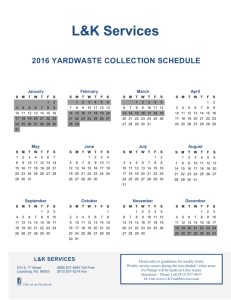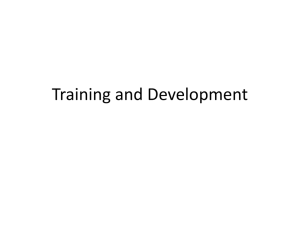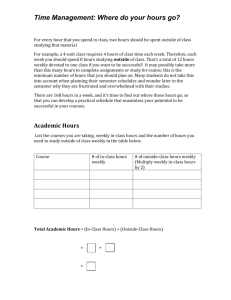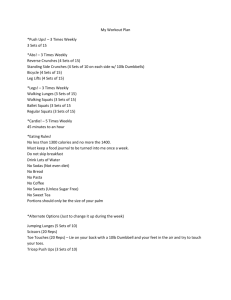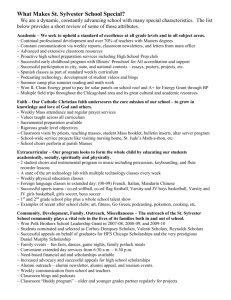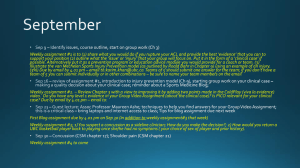Break Even Analysis Constructing Charts
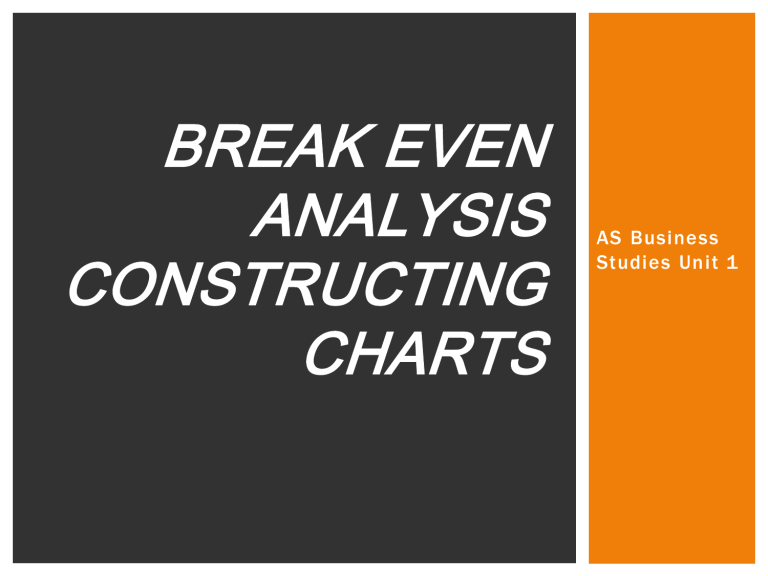
BREAK EVEN
ANALYSIS
CONSTRUCTING
CHARTS
AS Business
Studies Unit 1
AIMS AND OBJECTIVES
Aim:
Understand how to construct a break even chart
Objectives:
Define break even
Construct a break even chart
Analyse a break even chart
STARTER
Define Break Even
Why is Break Even Important?
CONSTRUCTING BREAK EVEN
CHART
Information Needed
Weekly Fixed Costs
Variable Costs per customer
(original forecasted figure)
Average revenue earned per customer
Maximum weekly number of customers – the capacity of the restaurant
‘Eat Your Fill’ Data
£2,800
£3
£10
600
We can construct a break even chart to show the revenue and costs of a business at different levels of output. Follow each stage carefully by drawing the chart on the graph paper as you go.
Mark out the scales on graph paper. The vertical axis will record weekly costs and revenues in £. The scale will extend from zero at the origin to the maximum revenue that can be earned = 600 customers x £10 each =
£6,000. Mark out the scale in squares of £1,000.
The horizontal axis records the number of customers (or units of output). This scale will extend from zero at the origin to a maximum capacity of 600. Mark out the scale in squares of 100
STAGE 1
Draw in the variable cost line. Variable costs per customer were forecast to be £3. Start this line at zero
– no customers means no variable costs are used in production. Just one more point is needed to complete the variable cost line. At 600 customers a week, total variable costs will be £1,800
– add this coordinate into the graph and then join the two points with a straight line from zero to £1,800.
STAGE 3
Draw in the fixed costs line. Weekly fixed costs are £2,800 and – because they don’t vary with the number of customers – this line can be drawn completely horizontal from the point
£2,800 on the vertical scale.
STAGE 2
Add fixed and variable costs together at all levels of output to give the total weekly costs of the businesses. This line
STARTS at £2,800 because even with no customers, there will be weekly fixed costs of
£2,800. The fixed cost line is then drawn parallel to the variable cost line ending it at
600 customers. To check this
– the total costs at 600 customers will be:
£2,800 + (600 x £3) =
£4,600. Plot this coordinate.
This will give you a total costs line parallel to variable costs.
STAGE 4
Add the revenue line to complete the break-even chart. The restaurant’s revenue will be zero with no customers so this line starts at the origin. The other coordinate needed will be at maximum sales revenue:
600 customers x £10 = £6,000.
Draw a straight line between zero and £6,000 (at 600 customers).
STAGE 5
The level of output at which the firm just breaks even can now be shown by drawing a vertical line down to the horizontal axis from where total cost = total revenue. Any point to the right of this break even point is profit. This can be calculated by doing Sales
Revenue – Total Costs. Any point to the left of the break-even point is where the business makes a loss.
STAGE 6
STAGE 7
From the chart we are able to tell:
The restaurant’s original forecasted break even number of customers is 400.
That up to 400 customers a loss is made by the business (loss making range of output).
After 400 customers a profit is made – for example, at 500 customers the forecasted profit is £700 per week.
The largest profit is, clearly, made at the maximum level of customers (600). There is a profit making range of 200 customers. 600 (max customers) – 400 (break even customers).
EXTENSION QUESTIONS
What is the profit/loss at 200 customers?
What is the profit/loss at 550 customers?
If the business is achieving 450 customers what is the margin of safety?
How could the business lower it’s break even point?
BABY CLOTHES
MANUFACTURERS
Each table is a group of baby clothes manufacturers.
You must use your data, to work out the break-even point for your business.
Draw your break even point on graph paper.
Analyse your break even chart as follows:
Break Even Point
Loss Making range of output
Margin of safety
Where is largest profit made?
